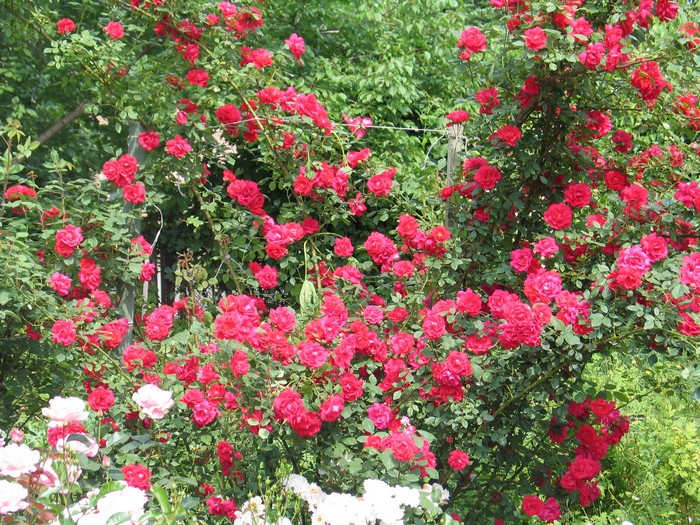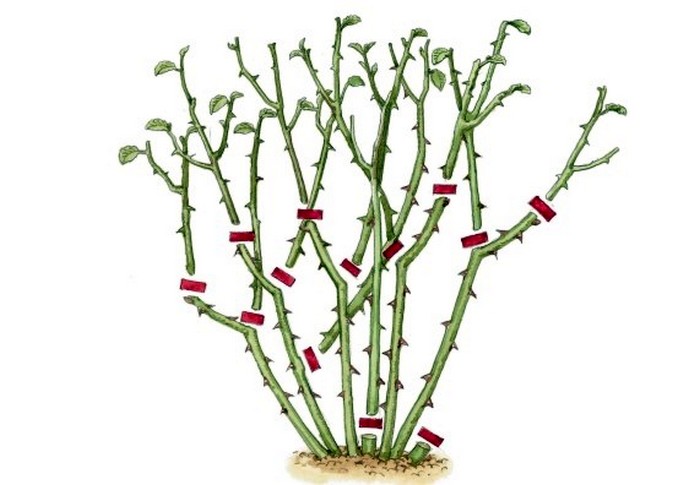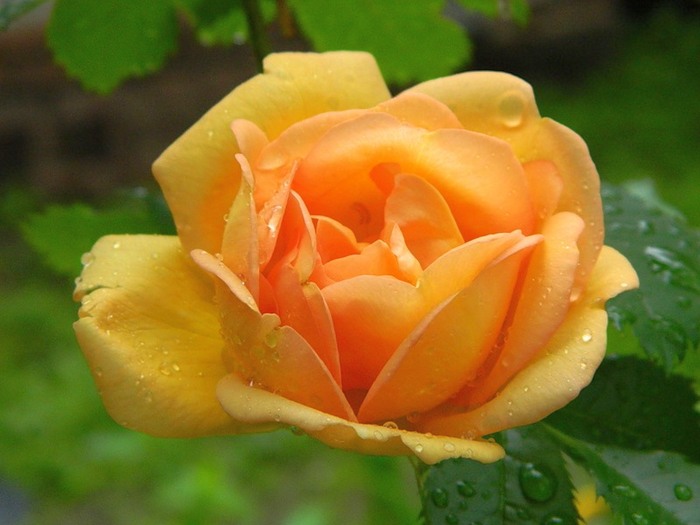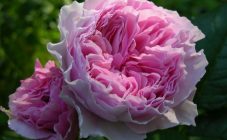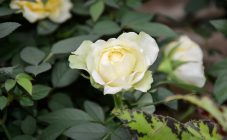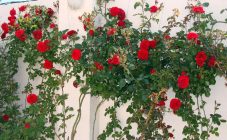Content:
Climbing roses are the best landscaping choice for vertical landscaping. They are used with pleasure to decorate the site by both amateurs and professionals. Lush bloom of climbing roses is long-lasting, mesmerizing.
There are two groups of climbing roses: climber (climbing climbing roses, "climber" in English translates as - to climb, climb), and ramblers (curly climbing roses, "ramble" - to crawl, curl). Rumblers have abundant flowering, but once a season and only on the shoots of previous years. Flowers are collected in inflorescences up to 20 pcs. Rambler have flexible stems.
Climber roses - what is it
Climbers are erect climbing roses with large flowers obtained by crossing climbing roses with hybrid tea and Floribunda roses. The bush is powerful, well branched. Flowers are formed on all shoots, including young ones. Shoots are thick and tough. Does not need support. The lashes grow upright, then take on a drooping shape under their own weight. Flowers are much larger than those of ramblers. The bloom is very spectacular. Climbers grow slowly.
Description and care
Climbers are vigorous plants. The bush is formed from strong shoots, reaching 5 m. Flowers are large enough. Climber roses bloom profusely and for a long time. Bloom for the first time in July, again in September. Flowers are formed on the shoots of the past and the current year. 3-10 buds are formed in inflorescences.
Choose a sunny place for landing. The soil should be loose and fertile. On clay soil, drainage 15-20 cm high must be poured on the bottom.
The care is no different from other types of roses. In the first year after planting, the bush is watered often, and the next season, watering is rarely carried out, but abundantly. For an optimal humidification regime, it is recommended to organize drip irrigation.
Pruning is done in early spring. Flowers are formed on the main shoots, and flowering on them lasts almost 5 years, so they are pruned after four years of cultivation. The skeleton is formed from one to four-year-old shoots on which young flowering shoots are formed. All weak growths should be removed.
Roses are fed in the second or third year of cultivation. During the season, 4-5 dressings are made. Humus, superphosphate, complex fertilizers are suitable for feeding.
Cultivars
The following varieties have gained particular popularity:
- Golden climber rose;
- Orange climber rose;
- New dawn climber rose;
- Breath of life climber rose;
- Compassion climber rose.
It is worth talking in more detail about the climbing rose varieties Orange Climber and Golden Climber.
Rose Golden Claym
The rose was bred in 1933. The shoots reach 3 meters, the size of the flower is usually 6-7 cm in diameter. Flowers are pale yellow, with a more intensely colored core. Winter hardiness and disease resistance - above average.
Rose Orange Climber
A beautifully blooming, vigorous, erect bush that grows up to 2 meters. The leaves are dark green. The flowers are medium-double, light orange. They usually appear one at a time, sometimes in brushes of 3-5 pieces. The aroma is very intense, spicy. Disease resistant, requires light shelter for the winter.
Major diseases and pests of culture
Diseases include bacterial cancer, powdery mildew, black spot, gray mold and rust. In case of damage, the damaged leaves are removed, and, if necessary, the shoots. Use chemicals if absolutely necessary.
Insects are also partial to this plant. Spider mites, thrips, sawflies, cicada - do not mind settling on climbing roses. For the fight, special drugs are used. From folk methods, they use an infusion of tobacco and soap, wormwood and yarrow.
Climber rose in landscape design is perfectly combined with small and large architectural forms. They captivate with their lush bloom and aroma. In Russia, in recent years, roses of this type are gradually gaining popularity.
